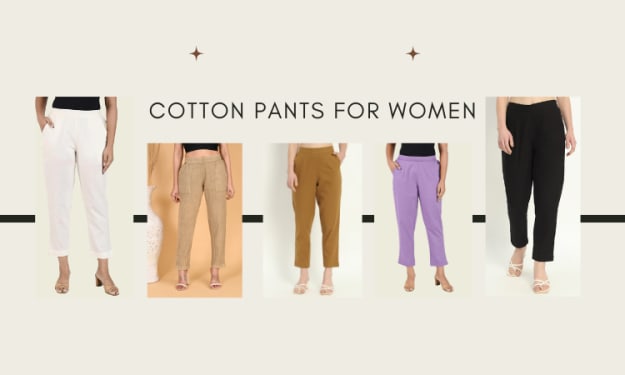THE RISE OF FAST FASHION
EXPLORING ITS IMPACT ON FASHION INDUSTRY & CONSUMER BEHAVIOR

Fast fashion, a term that has become synonymous with quick turnarounds and affordable clothing, has revolutionized the way we consume fashion. It promises us the latest runway looks at budget-friendly prices, tempting us to constantly update our wardrobes. However, beneath its alluring façade lies a complex web of consequences that we cannot ignore.
In this blog post, we will unravel the concept of fast fashion, exploring its definition and characteristics. We will delve into its impact on the environment, from excessive resource consumption to the staggering amount of textile waste it generates. Additionally, we will shed light on the often overlooked human cost, discussing the labor conditions and exploitation that occur within the fast fashion supply chains.
Join me on this journey as we navigate the multifaceted world of fast fashion, seeking a deeper understanding of its effects. Through this exploration, we will uncover the importance of conscious consumerism and the need for sustainable alternatives. Let's ignite conversations, challenge the status quo, and pave the way for a more ethical and environmentally conscious fashion industry. Together, we can redefine what it means to be fashionable while advocating for a better tomorrow.
WHAT IS FAST FASHION ?
Fast fashion is a term used to describe the rapid production and distribution of affordable clothing that follows the latest fashion trends. It is characterized by its quick turnaround time, allowing fashion retailers to bring new designs from the runway to stores at an accelerated pace. Fast fashion brands aim to provide consumers with trendy clothing options at low prices, making fashion accessible to a wide audience.
The concept of fast fashion emerged in the 1990s as a response to increasing consumer demand for stylish and affordable clothing. With traditional fashion cycles centered around seasonal collections, fast fashion introduced a new model that emphasized speed and efficiency. This model relies on efficient supply chain management, global outsourcing, and mass production techniques to produce large quantities of garments in a short time frame.
Fast fashion brands closely monitor fashion trends and quickly replicate popular designs, often drawing inspiration from luxury and high-end fashion houses. These brands prioritize affordability by utilizing cost-cutting measures in their production processes, such as sourcing materials and labor from countries with lower wages.
While fast fashion offers consumers the opportunity to keep up with the latest trends at budget-friendly prices, it also raises concerns regarding its impact on the environment and labor conditions. The rapid production and consumption of clothing contribute to excessive resource consumption, including water usage and energy consumption. Additionally, the disposal of fast fashion garments results in significant textile waste, adding to the environmental burden.
Furthermore, the fast fashion industry has faced criticism for the labor conditions in its supply chains. Workers, particularly in developing countries where production is often outsourced, may face low wages, long working hours, and unsafe working conditions.
In recent years, there has been a growing awareness and push for more sustainable and ethical alternatives to fast fashion. Consumers are increasingly seeking out brands that prioritize transparency, fair labor practices, and sustainable production methods. This shift in consumer behavior is driving the rise of slow fashion, sustainable fashion, and circular fashion initiatives that aim to minimize the negative impact of the fashion industry on the environment and workers.
Overall, fast fashion has transformed the fashion industry, providing accessible and trendy clothing to a wide range of consumers. However, its environmental and social implications highlight the need for more conscious and sustainable approaches to fashion consumption.
MAJOR FAST FASHION BRANDS: POPULAR FAST FASHION BRANDS
Fast fashion has been largely shaped by several major brands that have gained widespread recognition and popularity. These brands have developed unique business models, cater to specific target audiences, and have created notable collections that have left a lasting impact on the industry.
One of the most influential fast fashion brands is Zara. With its vertically integrated business model, Zara has the ability to quickly respond to emerging trends by designing, manufacturing, and distributing its clothing in-house. Their target audience includes fashion-forward individuals who seek affordable yet stylish clothing options. Zara is known for its "fast to market" strategy, where they introduce new designs to their stores every two weeks, ensuring a constant flow of fresh fashion choices.
Another major fast fashion brand is H&M. H&M focuses on offering fashionable and affordable clothing for a broad range of consumers. Their business model revolves around collaboration with high-end designers, such as Karl Lagerfeld and Alexander Wang, to create exclusive collections that generate excitement and drive sales. H&M's target audience includes trend-conscious shoppers who appreciate the ability to access runway-inspired looks at affordable prices.
Forever 21 is renowned for its trendy and affordable clothing options aimed at young, fashion-forward consumers. The brand captures the essence of pop culture and street style, appealing to a target audience seeking current fashion trends without breaking the bank. Forever 21 has been recognized for its extensive range of collections, from festival-inspired attire to athleisure wear, making it a go-to destination for the latest fashion trends.
In recent years, ASOS has gained significant traction as an online fast fashion retailer. ASOS focuses on a diverse range of clothing options, catering to various body types and style preferences. Their business model centers around a vast marketplace that offers products from both in-house brands and external sellers. ASOS has successfully targeted a young, fashion-forward audience through social media engagement and collaborations with influencers, creating a strong online presence.
Boohoo is another major fast fashion brand known for its affordability and trend-driven collections. With a strong emphasis on social media marketing and influencer partnerships, Boohoo has successfully captured the attention of a young, digitally-savvy audience. Their business model includes multiple brands under the Boohoo umbrella, such as PrettyLittleThing and Nasty Gal, each catering to specific niches within the fast fashion market.
These major fast fashion brands have played a significant role in shaping the industry, offering accessible and trend-driven clothing to a wide range of consumers. While they provide affordable fashion choices, it is important to consider the social and environmental implications of fast fashion and seek out sustainable alternatives when possible.
ENVIRONMENTAL IMPACT OF FAST FASHION: EXPLORING THE NEGATIVE EFFECTS OF FAST FASHION ON THE ENVIRONMENT
Fast fashion has gained immense popularity due to its affordability and quick turnover of clothing styles, but its environmental impact is a cause for concern. The industry's rapid production and consumption practices contribute to various negative effects on the environment.
Textile waste is a significant issue stemming from fast fashion. With consumers constantly chasing the latest trends, garments are frequently discarded, resulting in vast amounts of clothing ending up in landfills. According to the Environmental Protection Agency (EPA), nearly 11.3 million tons of textiles were generated as waste in the United States alone in 2018. The synthetic fibers used in many fast fashion garments take hundreds of years to decompose, exacerbating the waste problem.
Fast fashion also contributes to pollution through various stages of the production process. Textile dyeing is a major source of water pollution, as toxic chemicals are released into rivers and water bodies. The Global Fashion Agenda estimates that around 20% of global water pollution comes from textile dyeing and treatment. Additionally, the production of synthetic fibers, such as polyester, releases microplastics into the environment, further polluting water sources and harming marine ecosystems.
Water consumption is another environmental concern associated with fast fashion. The production of garments, particularly water-intensive crops like cotton, requires significant amounts of water. The World Wildlife Fund (WWF) reports that it takes approximately 2,700 liters of water to produce a single cotton t-shirt, equivalent to the amount an individual would drink over three years. The demand for cheap, fast fashion exacerbates the strain on water resources, especially in regions already facing water scarcity.
Moreover, fast fashion's reliance on synthetic fibers, such as polyester and nylon, contributes to the depletion of non-renewable resources, such as fossil fuels. These materials are derived from petroleum, leading to increased carbon emissions during their production process.
To address these environmental issues, sustainable fashion practices are gaining momentum. Slow fashion, which promotes higher-quality garments made to last, encourages conscious consumption and reduces waste. Additionally, sustainable fashion brands focus on using eco-friendly materials, such as organic cotton, recycled fabrics, and innovative alternatives like Tencel or Piñatex.
As consumers, we can make a difference by opting for sustainable fashion choices. This includes buying from ethical and eco-conscious brands, upcycling or repairing clothing, and embracing a mindset of quality over quantity. By making these choices, we can contribute to the reduction of textile waste, water consumption, and pollution caused by the fast fashion industry, while also supporting a more sustainable and environmentally-friendly fashion landscape.
ETHICAL CONCERNS IN FAST FASHION
Fast fashion's rapid production and low-cost business model often come at the expense of workers within its supply chains. The industry has been marred by various ethical concerns, including labor issues, poor working conditions, and low wages.
The Dark Side of Fast Fashion: Unveiling the Hidden Stories Behind Our Clothes
This topic aims to shed light on the often-hidden realities faced by garment workers within fast fashion supply chains. It delves into the labor issues and human rights violations that persist in many production facilities, particularly in low-wage countries where fast fashion brands outsource their manufacturing.
This topic covers,
• The prevalence of sweatshop conditions: Discuss the harsh working conditions that garment workers endure, such as long hours, lack of proper breaks, unsafe environments, and inadequate access to healthcare and protective gear.
• Exploitative labor practices: Highlight the widespread use of unethical labor practices, including child labor, forced labor, and excessive overtime without fair compensation. Provide examples and stories that emphasize the human impact behind fast fashion production.
• Low wages and poverty traps: Examine the issue of poverty wages, where workers earn barely enough to meet their basic needs, often living in poverty despite their long hours of work. Discuss how this perpetuates a cycle of poverty and economic vulnerability.
• Lack of worker empowerment and unionization: Explore the challenges faced by garment workers in organizing and forming unions to advocate for their rights. Highlight instances of worker suppression and the importance of empowering workers to create lasting change within the industry.
• Promoting transparency and accountability: Discuss the importance of transparency and traceability within supply chains. Highlight initiatives, certifications, and campaigns that aim to hold fast fashion brands accountable for their labor practices and encourage ethical sourcing.
By focusing on the ethical concerns and human impact behind fast fashion, this topic seeks to raise awareness and encourage readers to consider the social responsibility aspect of their fashion choices. It empowers readers to support brands that prioritize fair labor practices, advocate for workers' rights, and actively work towards creating a more equitable and sustainable fashion industry.
SUSTAINABLE ALTERNATIVES TO FAST FASHION
Fashion Revolution: Exploring Ethical and Eco-friendly Brands Leading the Change
This topic highlights the growing movement of eco-friendly and ethical fashion brands that prioritize sustainable practices and provide alternatives to the fast fashion industry. It focuses on introducing readers to brands that champion organic materials, fair trade, and recycling, while also emphasizing their unique approaches and notable collections.
Within this topic, you can explore:
Organic and natural materials: Discuss the use of organic cotton, hemp, linen, and other sustainable fabrics that are free from harmful pesticides and chemical treatments. Highlight brands that prioritize the use of these materials in their collections, promoting environmental sustainability and minimizing the impact on ecosystems.
Fair trade and ethical production: Shed light on brands that prioritize fair trade practices, ensuring that workers receive fair wages and are provided with safe working conditions. Explore how these brands work closely with artisans and communities, fostering empowerment and social well-being.
Recycled and upcycled fashion: Showcase brands that incorporate recycled materials, such as post-consumer plastic bottles or upcycled textiles, into their designs. Discuss the innovative approaches these brands take to transform waste into stylish and eco-friendly fashion pieces.
Transparency and supply chain traceability: Highlight brands that prioritize transparency by sharing information about their supply chains, production processes, and the origins of their materials. Discuss the importance of traceability in promoting accountability and enabling consumers to make informed choices.
Collaborations and impactful collections: Showcasing notable collaborations between sustainable fashion brands and influential designers, celebrities, or artists that aim to raise awareness about sustainability and drive change. Highlight collections that merge style and sustainability, challenging the notion that sustainable fashion compromises on aesthetics.
By showcasing these eco-friendly and ethical fashion brands, this content topic not only promotes sustainable alternatives to fast fashion but also celebrates the creativity and innovation within the industry. It empowers readers to explore these brands, support their mission, and embrace a more sustainable and conscious approach to fashion consumption.
In conclusion, fast fashion has undeniably transformed the fashion industry by offering trendy, affordable clothing to a wide consumer base. However, its rapid production and consumption practices have resulted in detrimental effects on both the environment and labor conditions. The excessive textile waste, pollution, and water consumption associated with fast fashion contribute to environmental degradation and the depletion of resources. Additionally, the prevalence of labor issues, poor working conditions, and low wages within fast fashion supply chains raise ethical concerns and highlight the need for improved worker rights and fair trade practices.
Fortunately, the rise of sustainable alternatives provides hope for a more responsible and ethical fashion industry. Eco-friendly and ethical fashion brands are championing organic materials, fair trade practices, and recycling initiatives, offering consumers sustainable choices that align with their values. These brands prioritize transparency, accountability, and the well-being of both the environment and garment workers.
As consumers, we have the power to make a difference by supporting these sustainable alternatives, embracing conscious consumption, and demanding change from fast fashion brands. By choosing quality over quantity, investing in timeless and durable pieces, and advocating for transparent supply chains, we can contribute to a more sustainable future for the fashion industry.
Ultimately, the fashion industry must shift towards more sustainable practices and prioritize the well-being of people and the planet. By embracing sustainability, ethical production, and responsible consumption, we can shape a fashion landscape that celebrates creativity, respects human rights, and safeguards the environment for generations to come.
About the Creator
Salini Kathir
Emerging Fashion blogger
Enjoyed the story? Support the Creator.
Subscribe for free to receive all their stories in your feed. You could also pledge your support or give them a one-off tip, letting them know you appreciate their work.






Comments
There are no comments for this story
Be the first to respond and start the conversation.